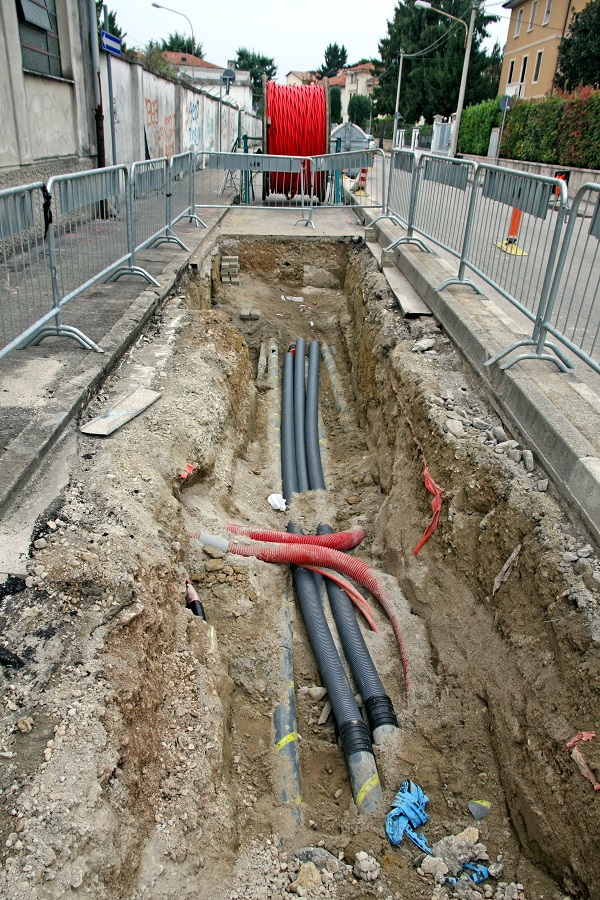
WSN introduces ‘Best Practices for Safe Trenching’ half-day course
Between 2008 and 2013, there were 12 fatalities and 33 critical injuries from excavation and trenching incidents at construction projects in the province, according to the Ontario Ministry of Labour. Excavating is dangerous work and Workplace Safety North (WSN) has launched a new half-day health and safety training course ‘Best Practices for Safe Trenching,’ to give workers and supervisors important insight on how to work safely in trenches.
Course instructor Kevin Plant, WSN Health and Safety Specialist, is an experienced journeyman powerline maintainer with municipal hydro. With more than 15 years’ experience digging trenches and excavating, as well as working down in the trenches laying pipes and cables, Plant says, “When it comes to trenching the same concepts apply across all industries – the rules are still the same, regardless of the task.
“When you look at the number of fatalities and injuries that are the result of trench collapses or cave-ins, and knowing there are safe work methods that can be put in place to protect the worker, then you want to know what you should be looking for: what are the hazards that I need to identify, what are my rights, and what do I need to know the company has put in place.”
Learn how to identify hazards
The half-day course – geared to any workplace that undertakes trenching as part of their operations – combines lecture, discussion, scenario-based exercises, and other interactive activities to ensure understanding of safe trenching practices, and help keep workplace dangers at minimum and safe practices at maximum.
“You learn how to identify hazards and assign each with a risk level, and how to come up with different control measures – whether it’s at the source, or along the path, or at the worker; it’s to put barriers in place to get that risk level down,” says Plant.
Information applies to variety of experience levels
“The nice thing with this trenching safety course is, whether you have zero experience or you have 25 years of experience, it’s a great course to give to the brand-new participant the knowledge and the basics about working in and around trenches and excavations, and for the experienced worker it’s a good refresher and reminder about some of things they may have become complacent about or not used to working with all the time. So the course works for a variety of experience levels.
“It’s also good for management and supervisors, even though they might not technically be working down in the trenches or excavation, they need to be aware of the hazards involved, what the legislative requirements are, and what their responsibility is as a supervisor,” notes Plant.
What participants say about trenching safety course
Hazard and risk assessments, identification of four soil types, interactive discussion, and learning how to apply legislation to everyday situations, are all elements of the course that Plant gets positive feedback.
“A lot of people really like the hazard assessment and the risk assessment. That was one of the things I’ve had a lot of good feedback on,” says Plant. “The soil identification – a lot of people didn’t realize there are four different types of soil and that each has different hazards.
“As busy people, participants like that the class is only a half day, and I find they’re also very interested in the legislation – I go through a lot of different work methods or experience that I’ve had, and different ways to do things. I think a lot of participants really like the general discussion we can have about different ways of doing things.
“I go out to a lot of different municipalities and I see a lot of different things so I can bring that knowledge into potentially what they’re doing. I get a lot of good feedback about that and the fact that I’ve actually done the work. Most of the people taking the course like the fact that I’ve actually done the work. I’m not just reading the slides.”
“I can explain what the legislation actually means and how to put it in the perspective of a participant: if you were doing this, this is where we would use it – and they get it. When you have experience, participants respect that and it gets them engaged in the course. It’s really great at the end of the course when they’re shaking your hand and saying, ‘Thanks a lot. I learned so much today!’
For more information, contact kevinplant@workplacesafetynorth.ca
Related
Best Practices for Safe Trenching – Half-day training course

